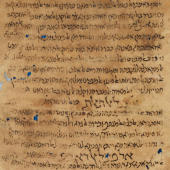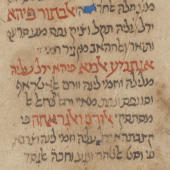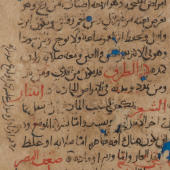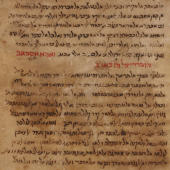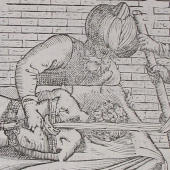The fame of Avicenna’s Canon of Medicine
A view from the Cairo genizah
The Persian polymath Avicenna (Abū ʿAlī al-Ḥusayn ibn ʿAbd Allāh ibn Al-Ḥasan ibn ʿAlī ibn Sīnā, 980–1037) completed his Canon of Medicine (Al-Qānūn fī al-ṭibb) during the first quarter of the eleventh century. This masterpiece was destined to become one of the most influential medical texts in both the Arabo-Islamic world and in pre-modern Europe, an influence that lasted until the eighteenth century. In the five books of the Canon, Avicenna effectively organised in a synthetic and didactic structure the teachings of Graeco-Roman physicians that had been translated into Syriac and Arabic in the eighth and ninth centuries and assimilated in the wider medieval Islamic world.
It is no surprise that such a pervasive treatise should be found among the 200,000 fragments of manuscripts of the Cambridge Genizah Collections, a cache retrieved from the storage room (genizah) of the Ben Ezra Synagogue of Old Cairo (Al-Fusṭāṭ). These fragments show that the Canon was widely circulating in Arabic and Judaeo-Arabic (Arabic language in Hebrew script), and that there were also Hebrew language translations for the benefit of non-Arabic speakers.
Research leading to this display was generously funded by the Wellcome Trust Research Resources Award ‘Medicine in Medieval Egypt: Creating online access to the medical corpus of the Cairo Genizah’.
